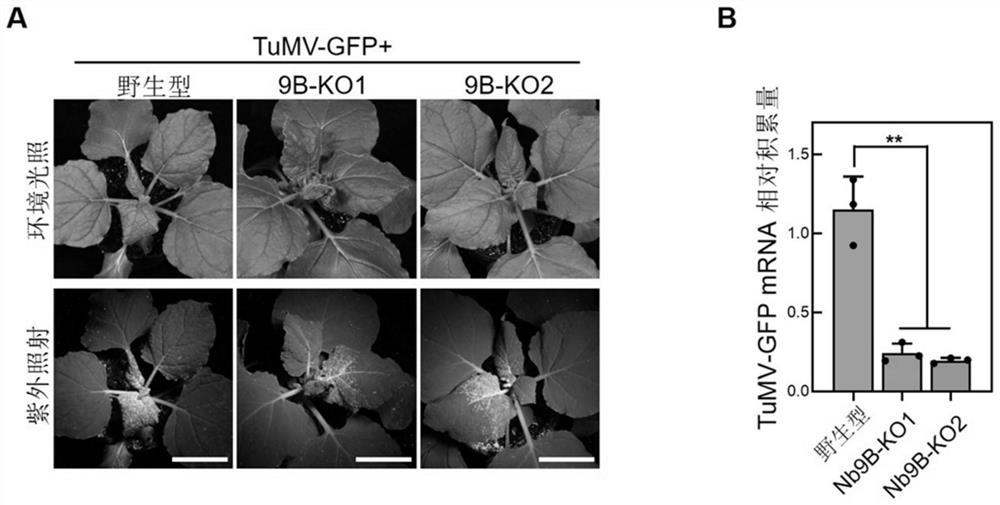Application of nicotiana benthamiana ALKBH9B gene in regulation and control of plant virus resistance and transgenic plant cultivation method
A technology of transgenic plants and breeding methods, which is applied in the fields of botany equipment and methods, angiosperm/flowering plants, biochemical equipment and methods, etc., which can solve the problems of mining anti-virus genes and achieve the effect of disease reduction
- Summary
- Abstract
- Description
- Claims
- Application Information
AI Technical Summary
Problems solved by technology
Method used
Image
Examples
Embodiment Construction
[0025] A method for cultivating ALKBH9B transgenic plants resistant to turnip mosaic virus: by leaf disc method, a gene knockout vector carrying the ALKBH9B gene target is introduced into a target plant to obtain a N. benthamiana ALKBH9B gene mutation homozygous plant.
[0026] Specifically include the following steps:
[0027] (1) According to the sequence alignment of the N. benthamiana gene database, it was found that there are two copies of the ALKBH9B gene;
[0028] (2) Perform CRISPR target screening on the public conserved regions of the two copies of ALKBH9B to obtain the gRNA target sequence: accaaactgcattgtgaca, as shown in SEQ ID NO: 2; design primers for PCR amplification, and clone to obtain the ALKBH9B-gRNA fragment; wherein , the primers are ALKBH9B-gRNA-F and ALKBH9B-gRNA-R, and the sequences are shown in SEQ ID NOs: 3-4 respectively;
[0029] ALKBH9B-gRNA-F:gtcgaagtagtgattgaccaaactgcattgtgacagttttagagctaga;
[0030] ALKBH9B-gRNA-R:ttctagctctaaaactgtcacaatgca...
PUM
 Login to View More
Login to View More Abstract
Description
Claims
Application Information
 Login to View More
Login to View More - R&D
- Intellectual Property
- Life Sciences
- Materials
- Tech Scout
- Unparalleled Data Quality
- Higher Quality Content
- 60% Fewer Hallucinations
Browse by: Latest US Patents, China's latest patents, Technical Efficacy Thesaurus, Application Domain, Technology Topic, Popular Technical Reports.
© 2025 PatSnap. All rights reserved.Legal|Privacy policy|Modern Slavery Act Transparency Statement|Sitemap|About US| Contact US: help@patsnap.com



